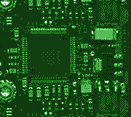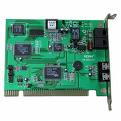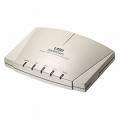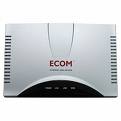 |
Modem (from modulator-demodulator) is a device that modulates an analog carrier signal to encode digital information, and
also demodulates such a carrier signal to decode the transmitted information. The goal is to produce a signal that can be
transmitted easily and decoded to reproduce the original digital data. Modems can be used over any means of transmitting analog
signals, from driven diodes to radio.
The most familiar example is a voiceband modem that turns the digital '1s and 0s' of a personal computer into sounds that
can be transmitted over the telephone lines of Plain Old Telephone Systems (POTS), and once received on the other side, converts
those 1s and 0s back into a form used by a USB, Serial, or Network connection. Modems are generally classified by the amount
of data they can send in a given time, normally measured in bits per second, or "bps". They can also be classified
by Baud, the number of distinct symbols transmitted per second; these numbers are directly connected, but not necessarily
in linear fashion (as discussed under Baud.)
Faster modems are used by Internet users every day, notably cable modems and ADSL modems. In telecommunications, "radio
modems" transmit repeating frames of data at very high data rates over microwave radio links. Some microwave modems transmit
more than a hundred million bits per second. Optical modems transmit data over optical fibers. Most intercontinental data
links now use optical modems transmitting over undersea optical fibers. Optical modems routinely have data rates in excess
of a billion (1x109) bits per second. One kilobit per second (kbit/s or kb/s or kbps) as used in this article means 1000 bits
per second and not 1024 bits per second. For example, a 56k modem can transfer data at up to 56,000 bits per second over the
phone line.
External Modem
A modem that resides in a self-contained box outside the computer system. Contrast with an internal modem, which resides on
a printed circuit board inserted into the computer.
External modems tend to be slightly more expensive than internal modems. Many experts consider them superior because they
contain lights that indicate how the modem is functioning. In addition, they can easily be moved from one computer to another.
|







